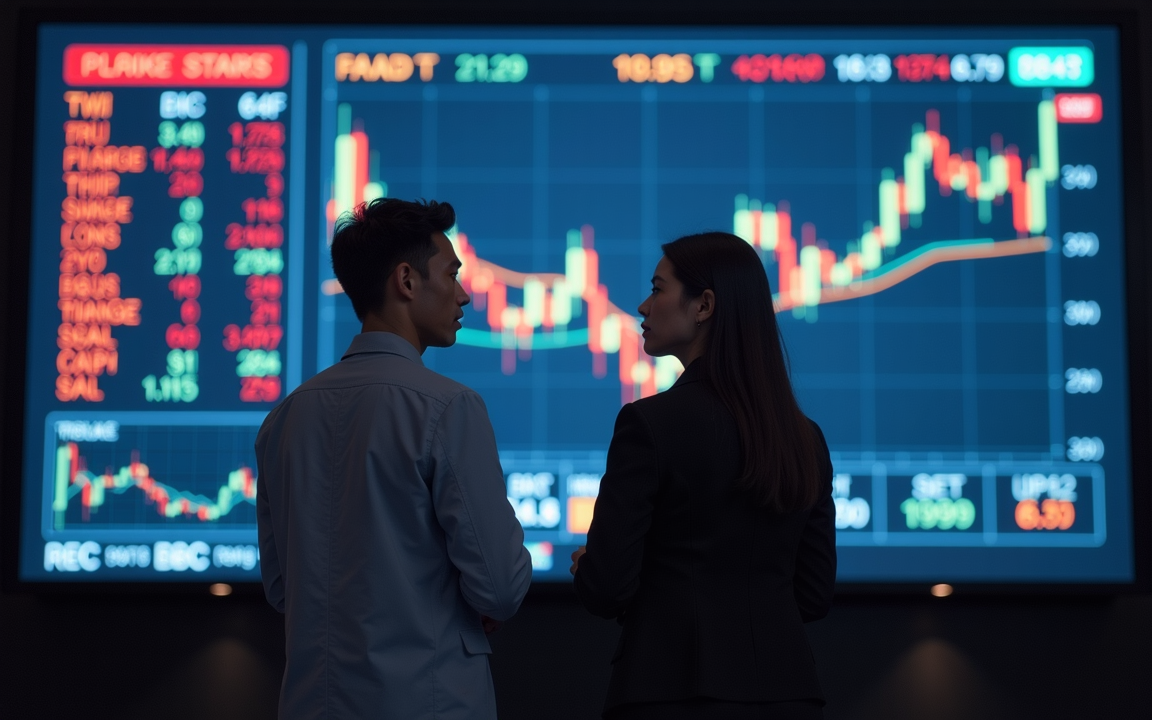Asian-Pacific financial markets displayed a mixed performance on Tuesday, failing to uniformly sustain the powerful rally seen on Wall Street overnight, which was ignited by news of a trade agreement between the United States and China.
While some regional bourses continued to advance, Hong Kong stocks notably reversed course, experiencing a sharp decline.
The backdrop for Tuesday’s Asian session was one of significant global optimism.
US stock markets had soared on Monday as fears of a damaging recession, previously stoked by the escalating US-China trade war, abated considerably after the two economic superpowers announced they had reached a deal.
The Dow Jones Industrial Average surged an impressive 1,160.72 points (2.81%) to close at 42,410.10, ending near its session highs.
The broader S&P 500 jumped 3.26% to 5,844.19, remarkably recovering over 20% from its April intraday low seen at the peak of tariff pessimism and narrowing its year-to-date losses to just 0.6%.
The tech-heavy Nasdaq Composite led the charge, adding 4.35% to settle at 18,708.34, as details of the trade understanding particularly benefited technology stocks with significant China exposure, such as Tesla and Apple.
Asia’s mixed response: Hong Kong falters, Japan surges
However, this unbridled enthusiasm wasn’t fully replicated across Asia on Tuesday.
Hong Kong markets, after strong gains in the previous session, saw a sharp reversal.
The Hang Seng Index declined by 1.4%, and the Hang Seng Tech Index plunged a more significant 2.43% by the close.
By mid-morning local time, the Hang Seng was already down 1.35%, with broad-based losses led by technology companies.
Among the worst performers were Sunny Optical Technology Group (down 6.09%), BYD Electronic International (down 5.14%), and Nio (down 4.41%). In contrast, mainland China’s CSI 300 index traded flat.
Other regional markets fared better. Japan’s benchmark Nikkei 225 surged 1.73%, and the broader Topix index advanced 1.24%.
In South Korea, the Kospi index moved up 0.25%, while the small-cap Kosdaq added 1.14%. Australia’s S&P/ASX 200 also rose, gaining 0.56%.
Indian markets in focus after record surge
Investors are also closely watching Indian markets, which on Monday experienced their best one-day gain since February 2021.
This surge was fueled by optimism surrounding a ceasefire agreement between India and Pakistan, pushing the benchmark Nifty 50 to its highest level since October 16, 2024, and the BSE Sensex to its highest close since October 3, 2024.
US futures flat, Gold eases as risk appetite improves
Following the significant overnight gains, US stock futures traded flat in early Tuesday Asian hours as investors awaited the release of a key US inflation report, which could provide further clues on the Federal Reserve’s policy path.
The perceived progress in US-China trade relations also impacted safe-haven assets.
Spot gold extended its decline on Tuesday as investors shifted towards riskier assets.
By 9:31 a.m. Singapore time, bullion was trading 0.24% lower at $3,225.31 per ounce, continuing its retreat from recent highs.
The mixed performance in Asia suggests that while the initial relief from the US-China trade deal was welcomed, regional specific factors and profit-taking may be tempering broader enthusiasm.
The post Asia markets open: Hang Seng plunges over 2% in tech sell-off, defying global relief rally appeared first on Invezz

